Understanding Korean Counters: List of Korean Counters and How to Use Them
Apr 03, 2025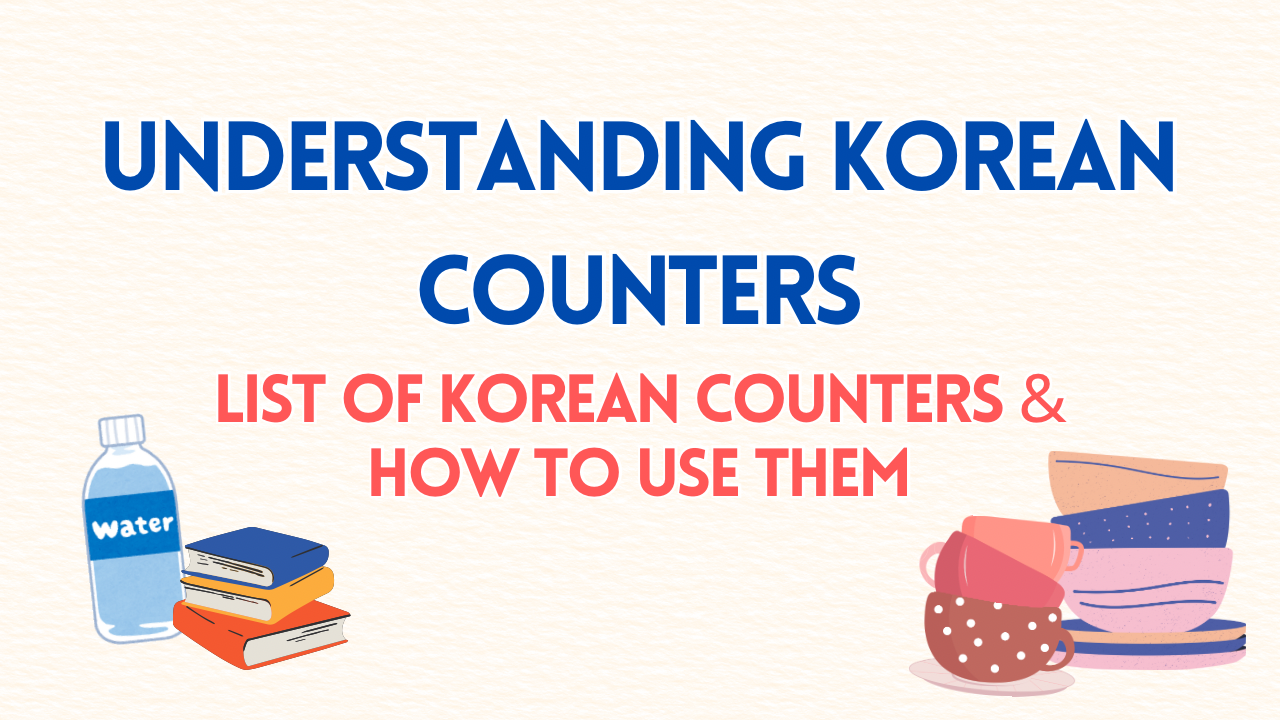
- Author: Good Job Korean team
- Editor: Good Job Korean team
👍 Contents (Click to navigate instantly)
✅ What Is A Counter
✅ How To Use The Counters
✅ Most Common Counters
✅ Time-Related Counters
✅ Food and Drinks Related Counters
✅ Measuring Unit Counters
✅ Money-Related Counters
✅ Other Counters
✅ Example Sentences
In our previous blog post (link), we learned about numbers in Korean. One usage of native Korean numbers is when they are followed by counters.
What is a counter?
A Korean counter is a word we use with a number to indicate the category of an object. It may be similar to English expressions such as "piece of paper," "loaf of bread," "two slices of pizza," "three cups of orange juice," etc.
In this blog post, we will learn Korean counters and when to use them. There are various words for counters, but Koreans usually use several important ones. Hence, please do not worry about having to remember all of them! They are good to know but not compulsory to memorize.
How To Use The Counters
To include counters in a sentence, you will need to follow this structure:
Item + Number + Counter
For example, to say two bottles of water, you should say:

That is easy, right? What is not easy here is matching these counters with the items correctly. Please do not worry since you only need to remember a handful of counters to speak like a pro.
Most Common Counters
Let us go through the most common counters Koreans use in daily life.
Note that while most counters pair with native Korean numbers, some pair with Sino-Korean numbers.
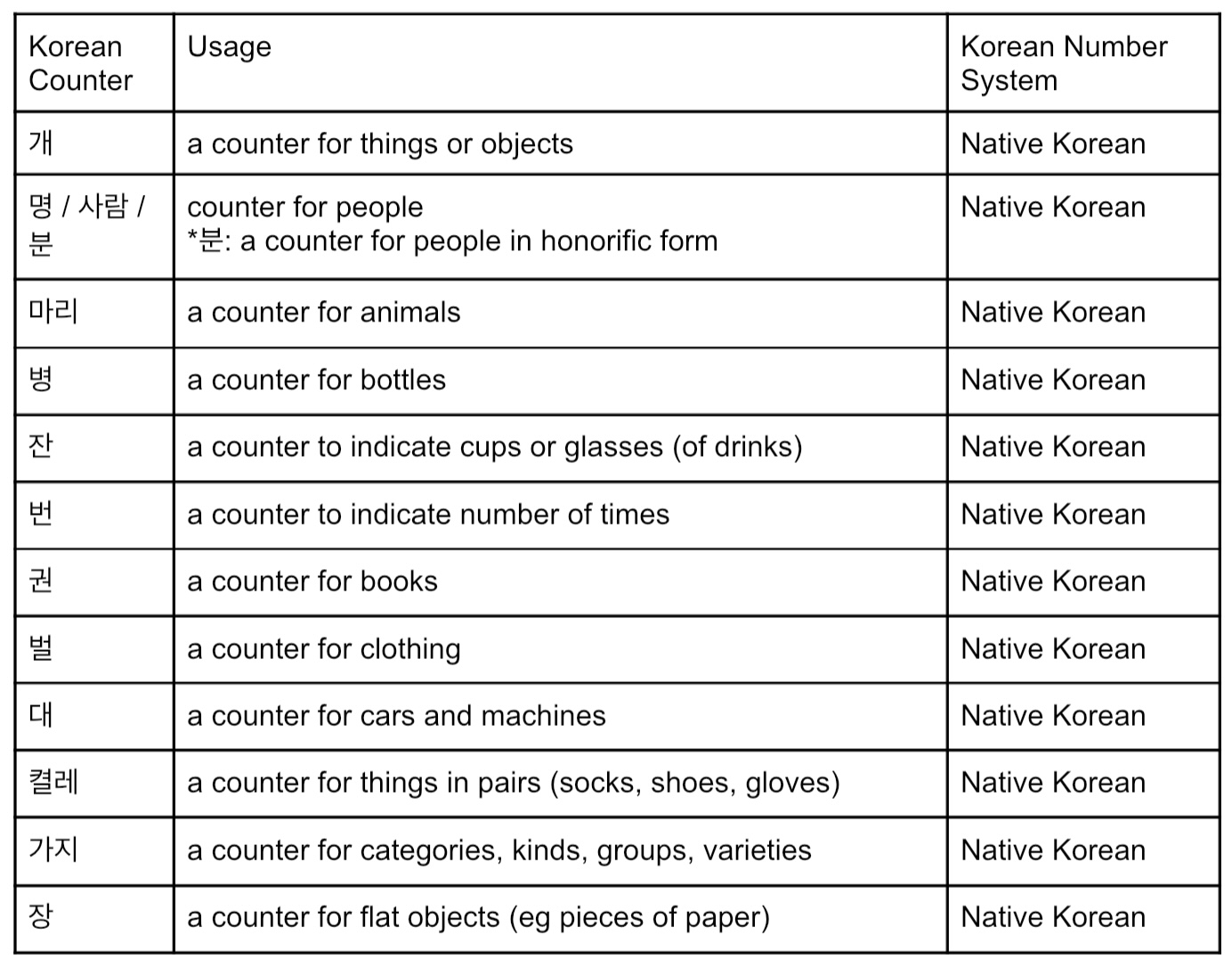
Now that you have learned the most common counters, let us quickly go through all the other counters in Korean according to the categories. Some of them are the essential ones you will often hear, while some others are rare. Again, do not stress yourself out if you can’t remember all of them!
Time-Related Counters
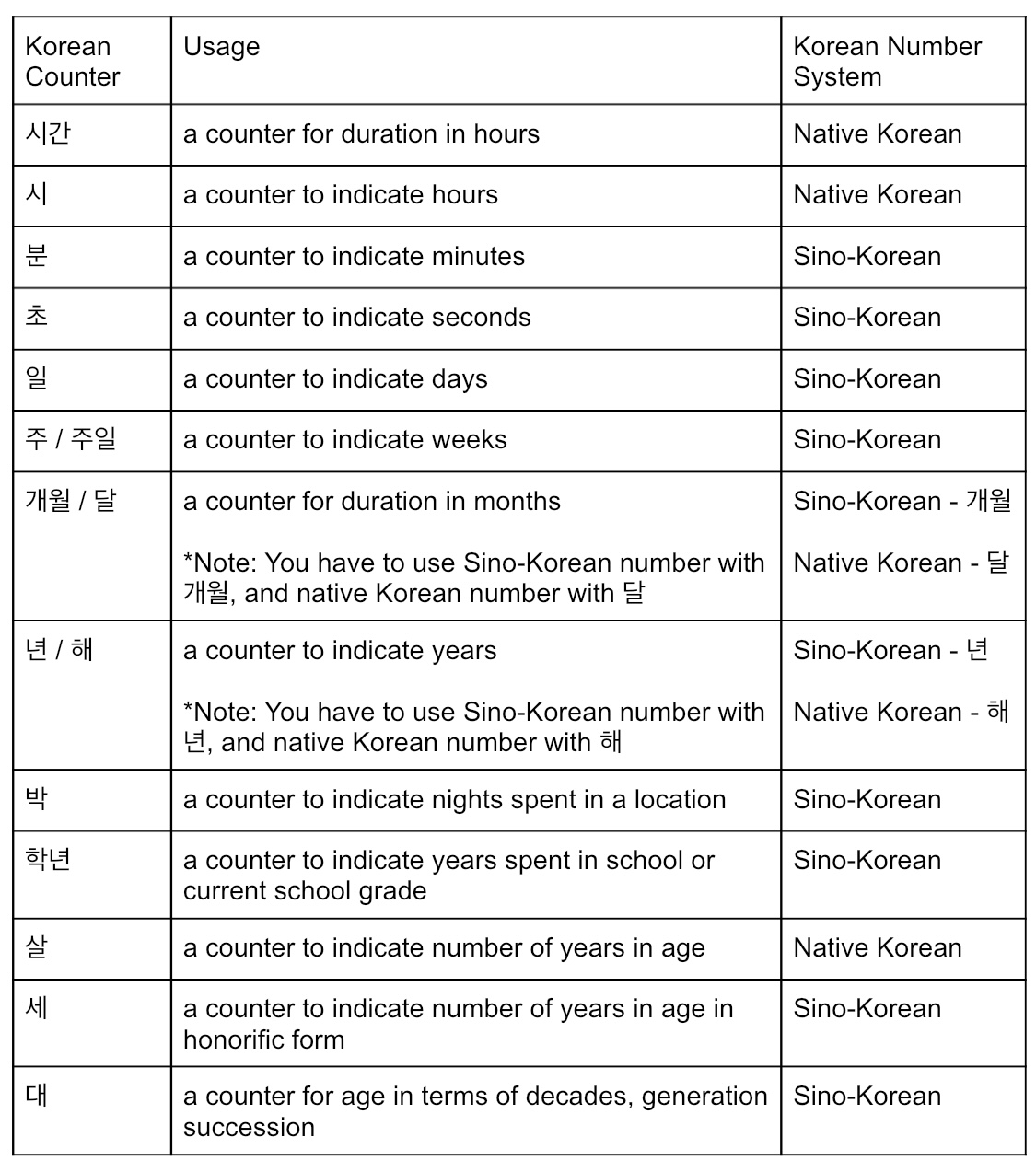
Food and Drinks Related Counters
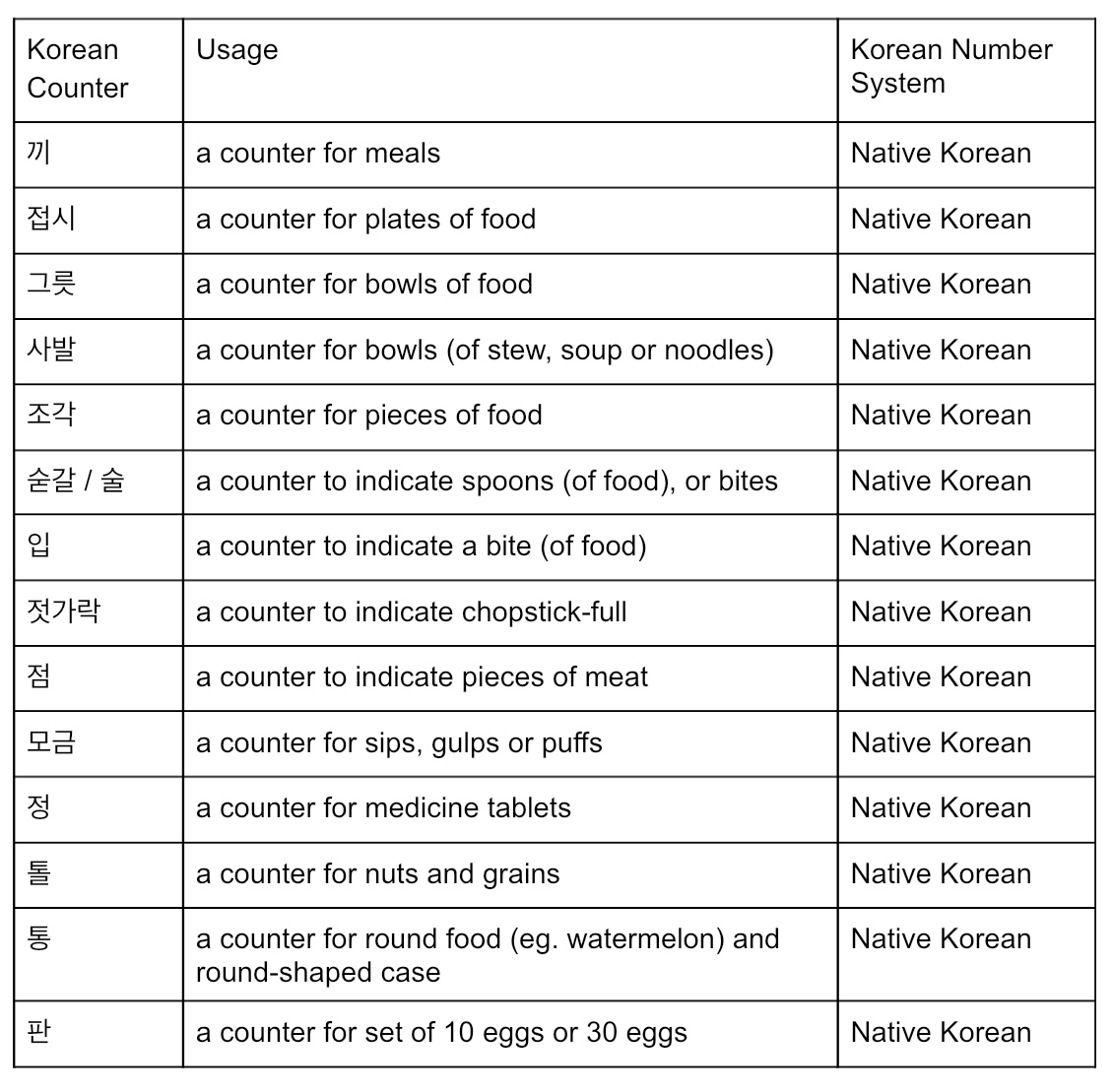
Measuring Unit Counters
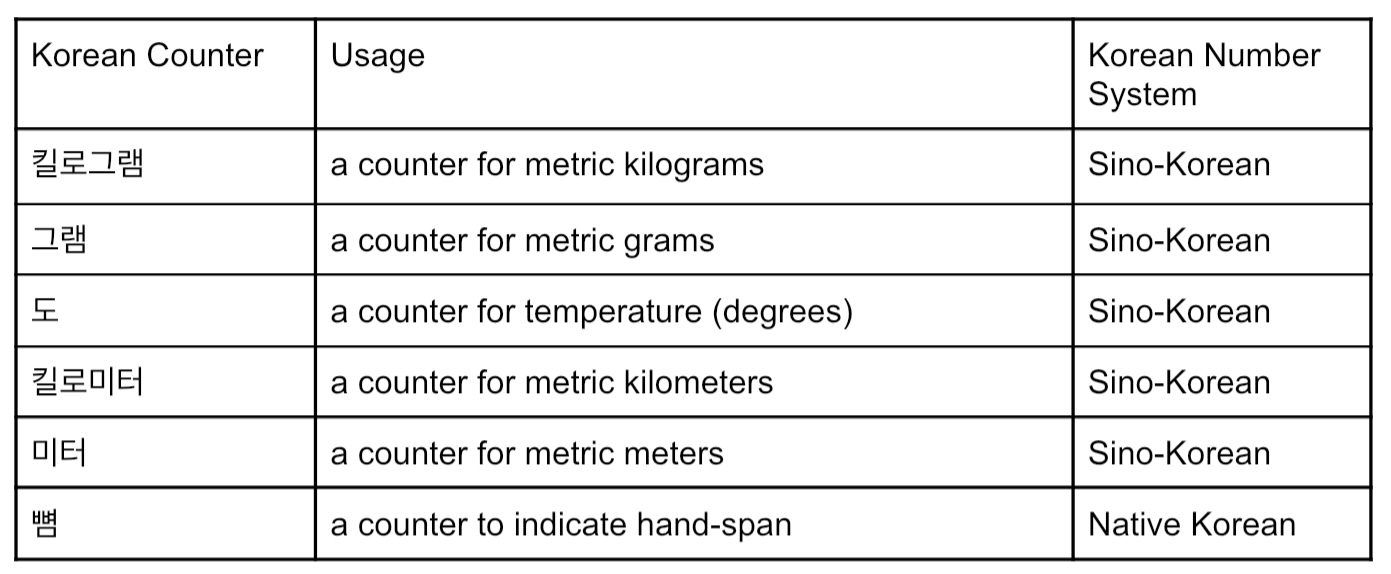
Money-Related Counters

Other Counters
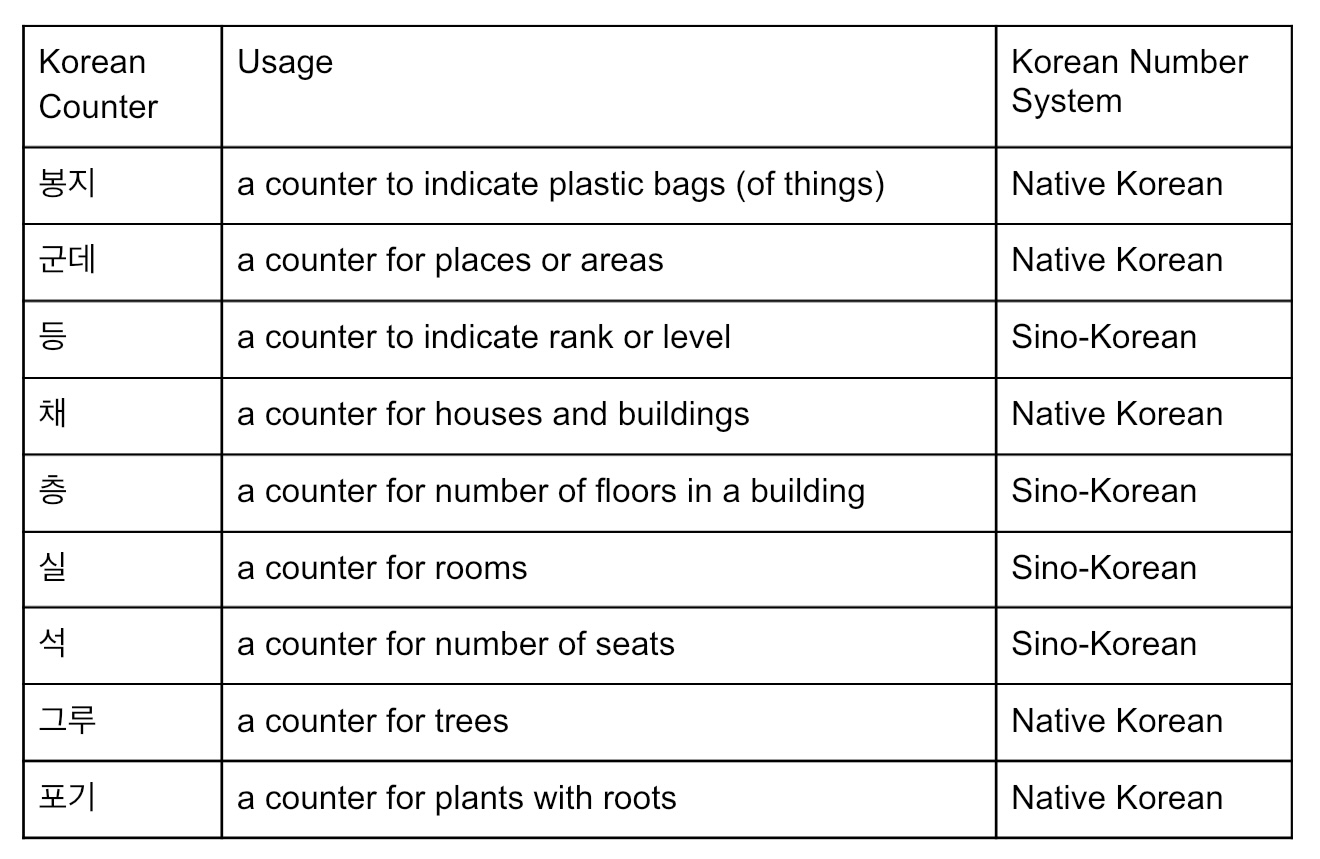
There are more counters in Korean but they are very rarely used. So, let’s stop here for now!
Example Sentences
With the counter words above, shall we go through some example sentences?
1. 개 - Counter for items, things, or objects
사과 세 개 주세요.
Please give me three apples.
*사과: apple
*셋: three (native Korean number)
*주다: to give
2. 명 - Counter for people
친구가 두 명 있어요.
I have two friends.
*친구: friend
*두: two (native Korean number)
*있다: to exist, to have
3. 마리 - Counter for animals
동물 보호소에는 네 마리의 강아지가 있습니다.
There are four puppies in the animal shelter.
*동물: animal
*보호소: (protective) shelter
*넷: four (native Korean number)
*강아지: puppy
*있다: to exist, to have
4. 병 - Counter for bottles
형은 와인 두 병을 마셔서 취했어요.
My brother is drunk because he drank two bottles of wine.
*형: older brother (for male)
*와인: wine
*두: two (native Korean number)
*마시다: to drink
*취하다: to be drunk
5. 잔 - Counter for cups or glasses (of drinks)
아버지는 매일 아침 두 잔의 커피를 드십니다.
Father drinks two cups of coffee every morning.
*아버지: father
*매일: every day
*아침: morning
*두: two (native Korean number)
*커피: coffee
*드시다: to drink (honorific form)
6. 번 - Counter for indicating the number of times
저는 한국에 한 번도 가본 적이 없어요.
I have not been to Korea (even once).
*저: I, me
*한국: Korea
*하나: one (native Korean number)
*가다: to go
*~어/아 보다 + ~(으)ㄴ 적이 있/없다: an expression to refer to one’s experience
7. 권 - Counter for books
도서관에서 책 다섯 권을 빌렸어요.
I borrowed five books from the library.
*도서관: library
*책: book
*다섯: five (native Korean number)
*빌리다: to borrow
8. 벌 - Counter of clothing
새 옷을 두 벌 샀어요.
I bought two new clothes.
*새: new
*옷: clothes
*두: two (native Korean number)
*사다: to buy
9. 대 - Counter of cars or machinery
주차장에 차가 세 대 있습니다.
There are three cars in the parking lot.
*주차장: parking lot
*차: car
*셋: three (native Korean number)
*있다: to exist
10. 장 - Counter for flat objects
사진 다섯 장을 인쇄했어요.
I printed five pictures.
*사진: picture, photo
*다섯: five (Native-Korean number)
*인쇄하다: to print
In summary, Korean counters play a crucial role in specifying the quantification of objects, people, and actions. There are many counters in Korean, but only several are commonly used. Learning and mastering these counters is essential in improving your fluency and becoming proficient in Korean.
- Author: Good Job Korean team
- Editor: Good Job Korean team



